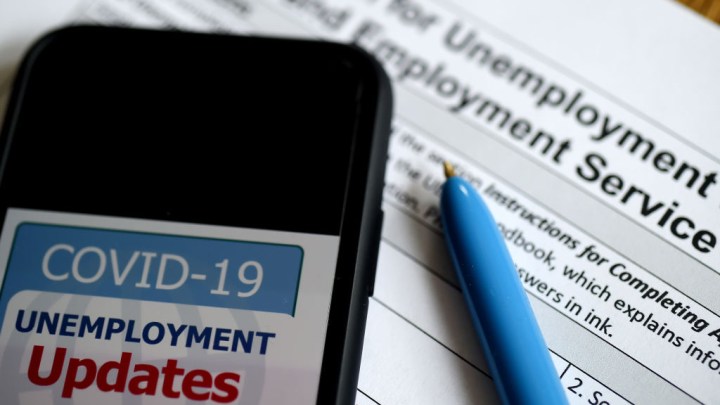
Unemployment recipients aren’t getting support they’re eligible for, report finds
Unemployment recipients aren’t getting support they’re eligible for, report finds

When it comes to joblessness in this country, we’ve been miscounting and paying too little in unemployment assistance. That’s according to a new report from the nonpartisan Government Accountability Office.
Marketplace’s Nova Safo joined “Marketplace Morning Report” host David Brancaccio to discuss its findings.
Nova Safo: Among the two big takeaways in this report is the finding that a lot of people have been shortchanged on the aid they’re entitled to. This has to do with the Pandemic Unemployment Assistance program — that’s the one the federal government funded through the Coronavirus Aid, Relief and Economic Security Act, meant for people who don’t qualify for regular state unemployment aid, like gig workers.
The Government Accountability Office found that after the $600 in weekly supplemental aid from the federal government expired over the summer, in 29 of the 41 states that reported data, unemployed people were getting paid less than the $245 a week needed to remain above the federal poverty line. That’s less than Congress intended for them to get.
David Brancaccio: And why is that?
Safo: States had a flood of claims initially, so they started by paying out the minimum amount allowed by law, just to get money out to people quickly. The idea was they’d later process documentation and proof of income, and pay back what people are owed.
In a lot of states, that still hadn’t happened as of late fall. On top of that, in 13 states, regular state unemployment aid left many people below the poverty line, as well.
In the meantime, the backlog is partly to blame for another problem, which is that we’re not getting an accurate count of how many people are jobless.
The Labor Department counts claims, not people. So if one person has multiple weeks of claims — due to the backlog, or just the way some states process [claims], doing multiple weeks at once — that can cause inflated figures.
That means we’re not getting an accurate picture of the unemployment crisis itself.
There’s a lot happening in the world. Through it all, Marketplace is here for you.
You rely on Marketplace to break down the world’s events and tell you how it affects you in a fact-based, approachable way. We rely on your financial support to keep making that possible.
Your donation today powers the independent journalism that you rely on. For just $5/month, you can help sustain Marketplace so we can keep reporting on the things that matter to you.


















